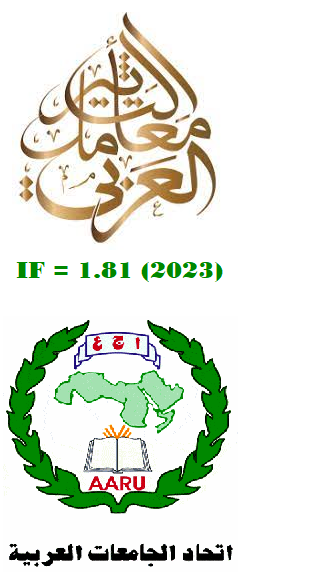Difficulties of Simultaneous Interpreting from Translation Students' Perspective
Abstract
The present study is a survey that explored the difficulties of simultaneous interpreting (SI) for translation students. The survey addressed the senior translation students in the Kurdistan Region, asking them about the troubles of SI from English into Kurdish or Arabic in the classrooms. Relying on the available models in interpreting studies reviewed by Pöchhacker (2004), this study assessed the students` difficulties in SI from the linguistic, cultural, cognitive, interactional, and translational aspects. For this purpose, a questionnaire was designed and distributed among the students, covering the issues relevant to the cited dimensions. Sixty respondents participated in the survey, whose responses were statistically analyzed and discussed in this paper. The results revealed that the cognitive issues- i.e., comprehending fast speaking, concentration, memorization, controlling stress, encyclopedic knowledge, and strategic thinking- formed the highest degree of difficulty (22%) for the students. In sum, working on all aspects of SI should be emphasized by the translation teachers in the classroom to pave the way for developing the students` skills and abilities in these respects.
Downloads
References
Agger-Gupta, N. (2001). From ‘Making Do’ to Established Service, the Development of Health Care Interpreter Services in Canada and the United States of America: A Grounded Theory Study of Health Organization Change and the Growth of a New Profession. (Ph.D. Dissertation). USA: The Fielding Graduate Institute.
Aminzadeh, S. (2021). Teaching translation in Iraqi undergraduate translation programs. International Journal of Social Sciences and Educational Studies, 8(4), 287-297.
Anderson, R.B.W. (2002). Perspectives on the role of interpreter. In: F. Pöchhacker & M. Shlesinger (Eds.), The Interpreting Studies Reader. London and New York: Routledge. pp. 209-217.
Bowen, D., & Bowen, M. (1984). Steps to Consecutive Interpreting. Washington: Pen and Booth.
Gile, D. (1995). Basic Concepts and Models for Interpreter and Translator Training. Amsterdam and Philadelphia (PA): John Benjamins.
Herbert, J. (1952). The Interpreter’s Handbook: How to Become a Conference Interpreter. Geneva: Georg and Cie SA.
Ingram, R.M. (1985). Simultaneous interpretation of sign languages: Semiotic and psycholinguistic perspectives. Multilingua, 4(2), 91-102.
Kalina, S. (1998). Strategische Prozesse Beim Dolmetschen: Theoretische Grundlagen, Empirische Fallstudien, Didaktische Konsequenzen. Tübingen: Gunter Narr.
Kirchhoff, H. (2002). Simultaneous interpreting: Interdependence of variables in the interpreting process, interpreting models and interpreting strategies. In: F. Pöchhacker & M. Shlesinger (Eds.), The Interpreting Studies Reader. London and New York: Routledge. pp. 111-119.
Kondo, M. (1990). What conference interpreters should not be expected to do. The Interpreters’ Newsletter, 3, 59-65.
Miremadi, S.A. (2008). Theoretical Foundation and Principles of Translation. Tehran: SAMT.
Ozolins, U. (2000). Communication needs and interpreting in multilingual settings: The international spectrum of response. In: R.P. Roberts., S.E. Carr, D. Abraham & A. Dufour (Eds.), The Critical Link 2, Interpreters in the Community. Amsterdam and Philadelphia (PA): John Benjamins. pp. 21-33.
Pöchhacker, F. (1992). The role of theory in simultaneous interpreting. In: C. Dollerup & A. Loddegaard (Eds.), Teaching Translation and Interpreting: Training, Talent and Experience. Amsterdam and Philadelphia (PA): John Benjamins. pp. 211-220.
Pöchhacker, F. (2004). Introducing Interpreting Studies. London: Routledge.
Russell, D. (2002). Interpreting in Legal Contexts: Consecutive and Simultaneous Interpreting. Burtonsville, MD: Linstok Press.
Russell, D. (2005). Consecutive and simultaneous interpreting. In: T. Janzen (Ed.), Topics in Signed Language Interpreting. Amsterdam and Philadelphia (PA): John Benjamins. pp. 135-164.
Seleskovitch, D. (1978). Interpreting for International Conferences: Problems of Language and Communication. Washington: Pen and Booth.
Stenzl, C. (1983). Simultaneous Interpretation: Groundwork towards a Comprehensive Model. (MA Thesis). London: University of London.
Tseng, J. (1992). Interpreting as an Emerging Profession in Taiwan-a Sociological Model. (MA Thesis). Taipeh: Fu Jen Catholic University.
Copyright (c) 2023 Sirvan Aminzadeh

This work is licensed under a Creative Commons Attribution-NonCommercial-NoDerivatives 4.0 International License.
Authors who publish with this journal agree to the following terms:
1. Authors retain copyright and grant the journal right of first publication with the work simultaneously licensed under a Creative Commons Attribution License [CC BY-NC-ND 4.0] that allows others to share the work with an acknowledgment of the work's authorship and initial publication in this journal.
2. Authors are able to enter into separate, additional contractual arrangements for the non-exclusive distribution of the journal's published version of the work (e.g., post it to an institutional repository or publish it in a book), with an acknowledgment of its initial publication in this journal.
3. Authors are permitted and encouraged to post their work online (e.g., in institutional repositories or on their website) prior to and during the submission process, as it can lead to productive exchanges, as well as earlier and greater citation of published work (See The Effect of Open Access).









